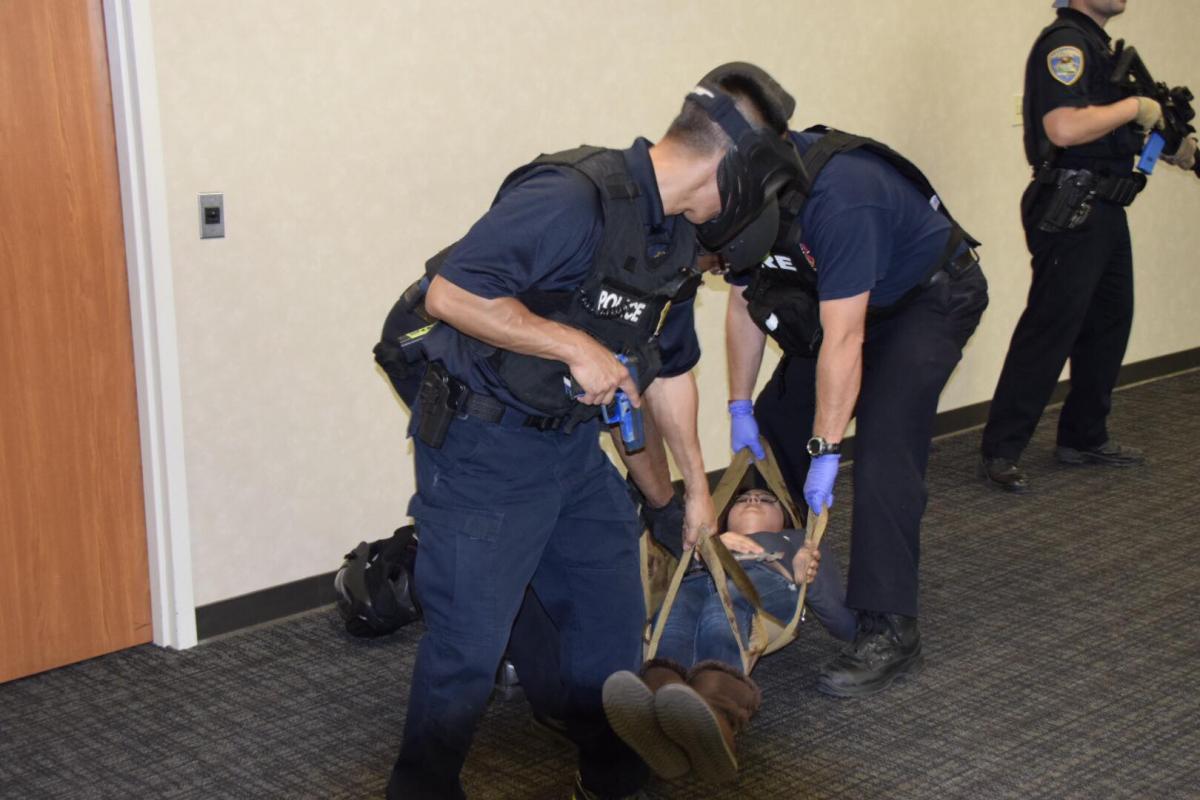Public Resources
Public Resources
Training & Exercises
[edit]
Building and refreshing skills through training and exercises is important to enable individuals to react if involved in an active shooter or other workplace violence incident. As these situations are unpredictable, quick thinking means the difference between life and death.
Training
 Trainings for individuals in the event of an active shooter incident:
Trainings for individuals in the event of an active shooter incident:
- IS-907: Active Shooter: What You Can Do: Online course from FEMA
- Run. Hide. Fight.: Training video from the FBI
- ALICE Training: Active shooter training and preparedness solutions for organizations of all sizes in a variety of industries
- Be Prepared for an Active Shooter – information sheet from FEMA Ready.gov
- A gunman opens fire in your building. What do you do?: Infographic from the Washington Post
Trainings for hemorrhage control:
- First Aid for Severe Trauma (FAST)
- Training from American Red Cross
- You Are the Help Until Help Arrives
- Stop the Bleed
- Training from the American College of Surgeons' Stop the Bleed program:
- Trainings for the public and instructors
- Online interactive training
- Free educational tools from the National Center for Disaster Medicine and Public Health (NCDMPH)
- Educational website
- App for Apple and Android devices
- Tourniquet instructions in 9 languages
- Training from the American College of Surgeons' Stop the Bleed program:
Trainings for managers and organizations:
- Mitigating Violence in Healthcare Facilities from the DelValle Institute
- IS-906: Workplace Security Awareness from FEMA
- Employee Vigilance and Escalation resources from CISA
Exercises
 One of the most effective ways to prepare for an active shooter incident is to conduct active shooter exercises. Local law enforcement is an excellent resource in designing exercises. To be prepared for an active shooter incident, training and exercises should include what to expect and how to react.
One of the most effective ways to prepare for an active shooter incident is to conduct active shooter exercises. Local law enforcement is an excellent resource in designing exercises. To be prepared for an active shooter incident, training and exercises should include what to expect and how to react.
As explained in ASPR's guide to Incorporating Active Shooter Incident Planning, exercises may include:
- Use of plans for how to address critically injured patients from the incident
- Inclusion of people with a variety of access and functional needs
- Training with first responders and facility security
- A walkthrough of the facility to allow public safety partners to become familiarized with hazardous areas and provide input on shelter-in-place sites, evacuation routes, etc.
The following sites provide resources for running your own exercises:
- Templates for Active Shooter Exercises on the resources page of the Association of Healthcare Emergency Preparedness Professionals (AHEPP):
- Creating School Active Shooter/Intruder Drills from the National Child Traumatic Stress Network (NCTSN), with information on how to create a trauma-informed active shooter/intruder drill.
« Previous | Topic Home | Next »

